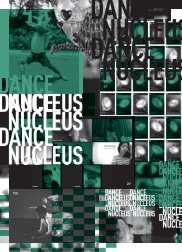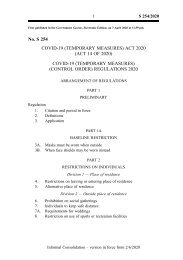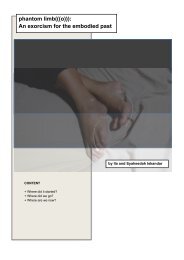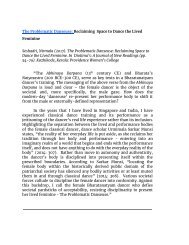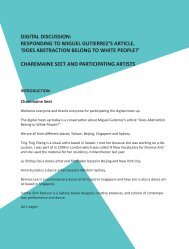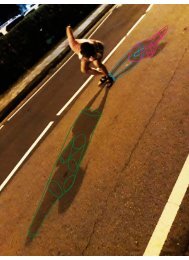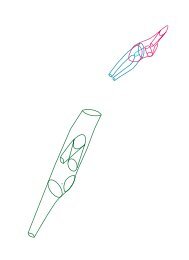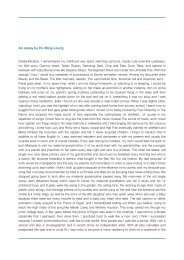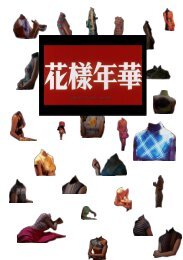Hermansyah Brotherhood
- No tags were found...
Create successful ePaper yourself
Turn your PDF publications into a flip-book with our unique Google optimized e-Paper software.
AL ALBAB Volume 7 Number 1 June 2018<br />
the remains of burning. The length of time for this ngokas depends on the first<br />
burning result. If the season is less hot, usually it is not good and the time to<br />
do ngokas will be longer and vice versa. Unburned woods in the nunu period<br />
will be cut and stacked for re-burning.<br />
When finished with ngokas, the next activity is nugal, that is planting rice<br />
with tugal. Between the rice plants, people usually grow vegetables, such as<br />
mustard greens, jawa’, pare, spinach, corn, chives, chili, eggplant, cucumber,<br />
and pumpkin.<br />
The next two months came the mabau period, which is clearing the grass that<br />
grow on the sides of the rice and vegetables. At this time some types of vegetables<br />
can be picked, such as spinach, chives and young corn. Approximately a month<br />
after the mabau, for those who plant the pulut (glutinous rice), came the time<br />
for ngompin. Ngompin is the activity to make ompin (emping) from sticky rice.<br />
A month after the ompin season came the harvesting season (ngotam). Rice<br />
stems are harvested one by one, collected and then threshed to remove the<br />
grain. After that the grain is dried in the sun, it is burned with a bushel. After<br />
that, some of the rice is separated for seeds for the next planting season, some<br />
are ground to be used as rice and some are stored inside kujuk 15 , if they need<br />
it, they will take the rice from the kujuk to be ground or sold.<br />
The whole series of farming activities are usually done by way of bebung,<br />
which is doing the huma en mass with a roll from one huma to another. The<br />
most frequent activities by way of bebung in berhuma are nobas, nugal, and<br />
ngotam. In addition, there is also magic called ilmu among the Malays that is<br />
inherited from their ancestors prior to Islam. <strong>Hermansyah</strong> (2010) reported<br />
that a number of ilmu shows the heritage of the ancestors. 16 In addition to the<br />
Islamic element in ilmu, there are also local elements that show the heritage<br />
of tradition, among others, similar or even the same beliefs with those among<br />
the Dayaks. Here are some examples;<br />
Semati anak mati anak<br />
Mati ditingang tanah tamak<br />
Totak buluh panyang panak<br />
Pakai nyuman porut simati anak<br />
15<br />
A peace of work in the form of a box made of wood to store padi (rice). Kujuk is<br />
normally in 1.5 x 5 meters and placed in a room between kitchen and main body of the house.<br />
16<br />
It is also the same as the people of Dayak Lawangan who have converted to Islam as<br />
reported by Mallinckrodt (1974)<br />
[ 65 ]




